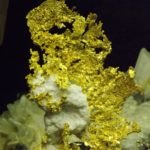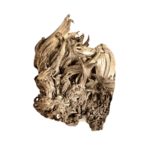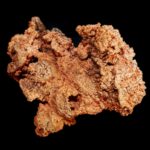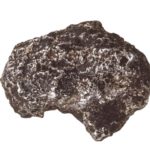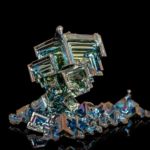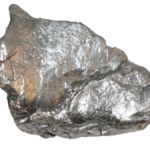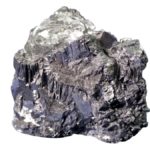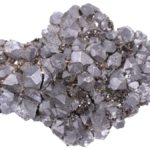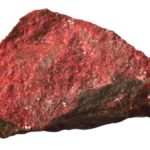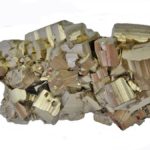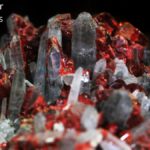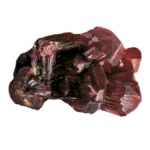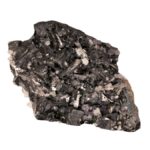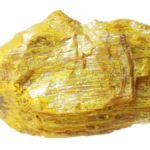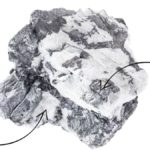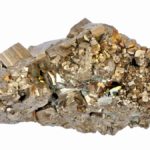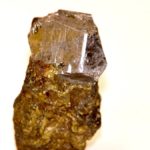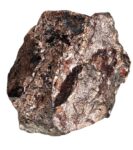Home / What are minerals?
What are minerals?
The Earth’s crust-and for that matter, any rock, sand, soil, gravel, or mud you pick up-is a rich source of minerals. The following lists several ways a material qualifies as a mineral:
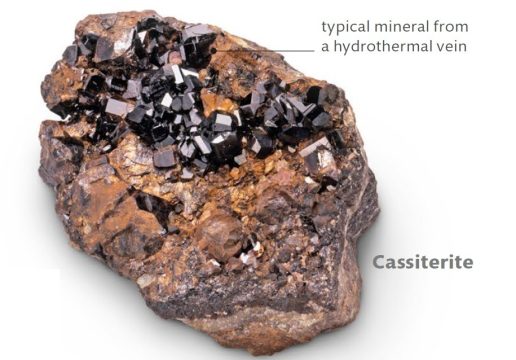
It is naturally occurring – Minerals are naturally occurring as a consequence of natural processes in or on the Earth. They are not made in a laboratory. Thus, a diamond that forms naturally within the Earth is a mineral; a synthetic diamond made in a laboratory is not a mineral.
It is made ofinorganic matter – A mineral has never been “alive.” Thus, coal or amber (hardened, ancient tree resin) are not minerals.
It is represented by a chemical formula or symbol – Minerals are either elements or compounds and can be written as a chemical symbol (for example, Au for the element gold) or formula (for example, SiO2 for quartz).
It has a crystalline form – The atoms or molecules that make up a mineral are the same throughout the entire mineral. When they are joined in a certain order, they create the internal structure (a definite pattern within the mineral) called the crystalline form. If this pattern can be seen with the unaided eye-and even with a microscope in the case of microcrystals-the solid is called a crystal.
How Do Minerals Form?
Minerals form through a wide variety of processes and in many different environments. We will examine three ways minerals can form: precipitation of mineral matter from a solution, crystallization of molten rock by cooling, and mineral matter deposition as a result of biological processes. Because most rocks are aggregates of minerals, they also form by these same processes.
Precipitation of Mineral Matter
Perhaps the most familiar way in which minerals grow is from an aqueous (water) solution containing dissolved material matter (ions). As long as the solution is not saturated, the motion of the dissolved ions keeps them from joining together. Two factors—a drop in temperature and water lost through evaporation—cause the solution to become closer to reaching saturation.
Once saturation is reached, the ions begin to bond, forming crystalline solids (called salts) that precipitate from (settle out of) the solution.

Crystallization of Molten Rock
The crystallization of minerals from molten rock, although more complicated, is a process similar to water freezing. When magma is hot, the atoms are very mobile, but as the molten material cools, the atoms slow and begin to chemically combine. Crystallization of a molten mass generates igneous rocks that consist of a mosaic of intergrown crystals that tend to lack well-developed planar surfaces, or faces.
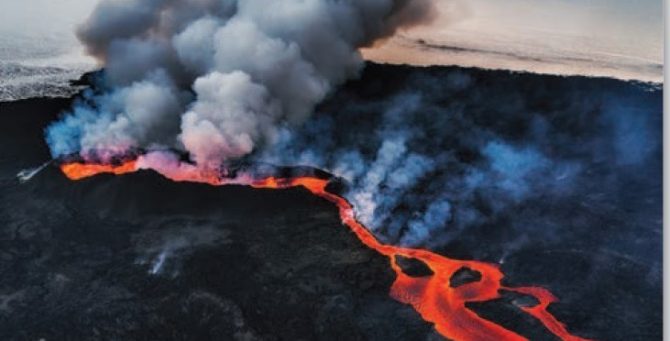
MINERALS COMPOSITION
MINERALS ARE free, uncombined elements or elemental compounds. Their compositions are given as chemical formulae. The formula for fluorite is CaF₂. This indicates that calcium (Ca) atoms have combined with fluorine (F) atoms. The subscripted number (₂) shows there are twice as many fluorine atoms as there are of calcium. Minerals are arranged into groups according to their chemical composition and their crystal structure.
NATIVE ELEMENTS
NATIVE ELEMENTS are free, uncombined elements which are classified into three groups: metals such as gold, silver, and copper; semimetals such as arsenic and antimony; and nonmetals, including carbon and sulfur. Metallic elements are very dense, soft, malleable, ductile, and opaque. Massive, dendritic, and wirelike habits are common. Distinct crystals are rare. Unlike metals, semimetals are poor conductors of electricity, and they usually occur in nodular masses. Nonmetallic elements can be transparent to translucent, do not conduct electricity, and tend to form distinct crystals.
Click on the image button for more information about the mineral.
SULFIDES AND SULFOSALTS
SULFIDES ARE chemical compounds in which sulfur has combined with metallic and semimetallic elements.
When tellurium sulfide substitutes for sulfur, the resultant compound is a telluride; if arsenic substitutes, arsenide is formed. The properties of sulfides, tellurides, and arsenides are somewhat variable.
Many sulfides have metallic lusters and are soft and dense (such as galena and molybdenite). Some are nonmetallic (orpiment, realgar), or relatively hard (marcasite, cobaltite). Well-formed, highly symmetrical crystals are the rule.
Sulfides are very important ores of lead, zinc, iron, and copper. They form in hydrothermal veins below the water table as they are easily oxidized to sulfates. Sulfosalts are compounds in which metallic elements combine with sulfur plus a semimetallic element (for example, antimony and arsenic). Their properties are similar to sulfides.
